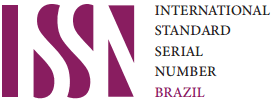Factors that influence the level of quality of life measured by the WHOQOL-BREF scale and suicide trend in a female chain in the state of São Paulo, Brazil
DOI:
https://doi.org/10.25118/2763-9037.2021.v11.191Keywords:
Female prison, female prisoners, mental health, quality of life, suicidal ideation, suicide attempt, visits, WHOQOL-BREFAbstract
Introduction: The population of women prisoners has increased in recent decades worldwide and Brazil occupies the 4th position in number of women prisoners and the rates of depression and risk of suicide are high. Objective: To evaluate the sociodemographic profile of the population of a female prison, as well as factors that influence the level of quality of life and aspects of mental health. Method: Two questionnaires were used. An instrument with general demographic and psychopathological issues and the WHOQOL-bref scale to assess the level of quality of life. Results: The sample studied was 214 women. On the WHOQOL-bref scale, the quality of life score was low: "needs to improve" and "regular". Suicidal behavior, when compared to other studies, was high in this population and psychological or psychiatric support was rare. The visits had an impact on the WHOQOL-bref psychological domain score and promoted a protective effect against suicidal behavior. Conclusion: Mental health support is precarious, and the risk of isolation compromises the mental health of prisoners. Contact with the outside is essential, however, there are still several barriers and limitations.
Downloads
Metrics
References
Lopez-Rey M. The First U. N. Congress on the Prevention of Crime and the Treatment of Offenders. The Journal of Criminal Law, Criminology, and Police Science. 1957 Jan;47(5):526. https://doi.org/10.2307/1139020
Patterson RF. Our Part in the Evolution of Correctional Mental Health Care. The Journal of the American Academy of Psychiatry and the Law. 2018;46(2):7. https://doi.org/10.29158/JAAPL.003740-18
Dumont DM, Brockmann B, Dickman S, Alexander N, Rich JD. Public health and the epidemic of incarceration. Annu Rev Public Health. 2012 Apr;33:325-39. https://doi.org/10.1146/annurev-publhealth-031811-124614 PMid:22224880 - PMCid:PMC3329888
Lima LR, Oliveira AS. Minimum criminal law and the application of the Bangkok rules in the face of the incarceration of women. Revista Jurídica Direito, Sociedade e Justiça. [Internet]. 2018 Oct 19 [cited 2019 Feb 10];7(0). Available from: http://periodicosonline.uems.br/index.php/RJDSJ/article/view/3096
Oliveira FS. Bangkok rules and female incarceration [Internet]. 2017 Apr [cited 2019 Feb 10]. Available from: https://canalcienciascriminais.com.br/regras-de-bangkok-encarceramento/
Brasil. Ministério da Justiça. Law 11.942/2009 [Internet]. Ministério da Justiça; 2009 [cited 2019 Feb 10]. Available from: http://www.planalto.gov.br/ccivil_03/_Ato2007-2010/2009/Lei/L11942.htm
Muniz CR, Bergo Leugi G, Alves AM. Women in the prison system: Why and how to understand their stories? RP3 - Revista de Pesquisa em Políticas Públicas [Internet]. 2018 Jan 24 [cited 2019 Feb 11];11(2). Available from: http://periodicos.unb.br/index.php/rp3/article/view/26945 - https://doi.org/10.18829/rp3.v11i2.26945
Sidhu N, Candilis PJ. A Feminist Perspective for Forensic Practice. Journal of the American Academy of Psychiatry and the Law Online. 2018 Dec 1;46(4):438-46. https://doi.org/10.29158/JAAPL.003787-18
Moore LD, Elkavich A. Who's Using and Who's Doing Time: Incarceration, the War on Drugs, and Public Health. Am J Public Health. 2008 Sep;98(Suppl 1):S176-80. https://doi.org/10.2105/AJPH.98.Supplement_1.S176 - PMid:18687610 - PMCid:PMC2518612
Walmsley R. World Prison Population List. 2010;15.
Rousseff D. Depen - Infopen Mulheres 2014. 2014 Jun p. 42.
Federal Government of Brazil. National Survey of Penitentiary Information 2014 - INFOPEN [Internet]. 2014 p. 42. Available from: http://www.justica.gov.br/news/estudo-traca-perfil-da-populacao-penitenciaria-feminina-no-brasil/relatorio-infopen-mulheres.pdf
Federal Government of Brazil. National Survey of Penitentiary Information 2018 - INFOPEN [Internet]. 2018 [cited 2019 Feb 12]. Available from: http://depen.gov.br/DEPEN/depen/sisdepen/infopen-mulheres/infopenmulheres_arte_07-03-18.pdf/view
Soares Filho MM, Bueno PMMG. Demography, vulnerabilities and right to health of the Brazilian prison population. Ciênc saúde coletiva. 2016 Jul;21:1999-2010. https://doi.org/10.1590/1413-81232015217.24102015 - PMid:27383334
Bartlett A, Hollins S. Challenges and mental health needs of women in prison. Br J Psychiatry. 2018 Mar;212(3):134-6. https://doi.org/10.1192/bjp.2017.42 - PMid:29486822
Fazel S, Seewald K. Severe mental illness in 33,588 prisoners worldwide: systematic review and meta-regression analysis. Br J Psychiatry. 2012 May;200(5):364-73. https://doi.org/10.1192/bjp.bp.111.096370 - PMid:22550330
Santos MV, Alves VH, Pereira AV, Rodrigues DP, Marchiori GRS, Guerra JVV. Mental health of incarcerated women in the State of Rio de Janeiro. Texto & Contexto - Enfermagem [Internet]. 2017 [cited 2019 Feb 10];26(2). Available from: http://www.scielo.br/scielo.php?script=sci_arttext&pid=S0104-07072017000200314&lng=en&tlng=en
https://doi.org/10.1590/0104-07072017005980015
Audi CAF, Santiago SM, Andrade MGG, Francisco PMSB. Common mental disorder among incarcerated women: a study on prevalence and associated factors. Ciência & Saúde Coletiva. 2018 Nov;23(11):3587-96. https://doi.org/10.1590/1413-812320182311.30372016 - PMid:30427432
Shuford SH, Gjelsvik A, Clarke J, van den Berg JJ. Depression among Women Released from Prison or Jail in the United States. J Health Care Poor Underserved. 2018;29(3):914-29. https://doi.org/10.1353/hpu.2018.0068 - PMid:30122672
Opitz-Welke A, Bennefeldt-Kersten K, Konrad N, Welke J. Prison suicide in female detainees in Germany 2000-2013. Journal of Forensic and Legal Medicine. 2016 Nov 1;44:68-71. https://doi.org/10.1016/j.jflm.2016.08.016 - PMid:27636654
Opitz-Welke A, Bennefeld-Kersten K, Konrad N, Welke J. Prison suicides in Germany from 2000 to 2011. International Journal of Law and Psychiatry. 2013 Sep 1;36(5):386-9. https://doi.org/10.1016/j.ijlp.2013.06.018 - PMid:23850339
Federal Government of Brazil. National Survey of Penitentiary Information 2016 - INFOPEN [Internet]. 2016 [cited 2019 Feb 12]. Available from: http://depen.gov.br/DEPEN/noticias-1/noticias/infopen-levantamento-nacional-de-informacoes-penitenciarias-2016
Moraes PAC, Dalgalarrondo P. Women imprisoned in São Paulo: mental health and religiosity. Jornal Brasileiro de Psiquiatria. 2006;55(1):50-6. https://doi.org/10.1590/S0047-20852006000100007
WHO. WHO Suicide data [Internet]. 2016 [cited 2019 Jun 18]. Available from: https://www.who.int/health-topics/suicide#tab=tab_1
Rodrigues CD, Souza DS, Rodrigues HM, Konstantyner TCRO. Trends in suicide rates in Brazil from 1997 to 2015. Brazilian Journal of Psychiatry. 2019;0(0):1-9. https://doi.org/10.1590/1516-4446-2018-0230 - PMid:30785540 - PMCid:PMC6796812
Barbui C, Tansella M. Suicide prevention strategies and mental disorders. Epidemiology and Psychiatric Sciences. 2009 Sep;18(3):169-71. https://doi.org/10.1017/S1121189X00000415 - PMid:20034191
Machado MFS, Leite CKS, Bando DH. Public Policies for Suicide Prevention in Brazil: a systematic review. 1. 2014 Dec 15;4(2):334-56. https://doi.org/10.11606/issn.2237-1095.v4i2p334-356
Palmer EJ, Jinks M, Hatcher RM. Substance use, mental health, and relationships: A comparison of male and female offenders serving community sentences. International Journal of Law and Psychiatry. 2010 Mar 1;33(2):89-93. https://doi.org/10.1016/j.ijlp.2009.12.007 - PMid:20036007
Sered SS, Norton-Hawk M. Women on the Institutional Circuit: A 9-Year Qualitative Study. J Correct Health Care. 2019 Jan 7;1078345818819811. https://doi.org/10.1177/1078345818819811 PMid:30616433
Oliveira M, Santos AF. Gender inequality in the prison system: considerations about barriers to visits and intimate visits to incarcerated women. Caderno Espaço Feminino [Internet]. 2012 Dec 18 [cited 2019 Feb 10];25(1). Available from: http://www.seer.ufu.br/index.php/neguem/article/view/15095
WHO Division of Mental Health and Prevention of Substance Abuse. WHOQOL : measuring quality of life. 1997 [cited 2019 Jul 2]; Available from: https://apps.who.int/iris/handle/10665/63482
Ginieri-Coccossis M, Triantafillou E, Papanikolaou N, Baker R, Antoniou C, Skevington SM, Christodoulou GN. Quality of life and depression in chronic sexually transmitted infections in UK and Greece: The use of WHOQOL-HIV/STI BREF. Psychiatriki. 2018 Sep;29(3):209-19.
https://doi.org/10.22365/jpsych.2018.293.209 - PMid:30605425
Jesus NM, Souza GF, Mendes-Rodrigues C, Almeida Neto OP, Rodrigues DDM, Cunha CM. Quality of life of individuals with chronic kidney disease on dialysis. Brazilian Journal of Nephrology [Internet]. 2019 [cited 2019 Jun 3];(ahead). Available from: http://www.scielo.br/scielo.php?script=sci_abstract&pid=S0101-28002019005004104&lng=en&nrm=iso&tlng=en
https://doi.org/10.1590/2175-8239-jbn-2018-0152 - PMid:30720851 - PMCid:PMC6788844
Redko C, Rogers N, Bule L, Siad H, Choh A. Development and validation of the Somali WHOQOL-BREF among refugees living in the USA. Qual Life Res. 2015 Jun;24(6):1503-13. https://doi.org/10.1007/s11136-014-0877-3 - PMid:25429823
Alves JC, Bassitt DP. Quality of life and functional capacity of elderly women with knee osteoarthritis. Einstein (São Paulo). 2013 Jun;11(2):209-15. https://doi.org/10.1590/S1679-45082013000200013 - PMid:23843063 - PMCid:PMC4872896
Bonomi AE, Patrick DL, Bushnell DM, Martin M. Validation of the United States' version of the World Health Organization Quality of Life (WHOQOL) instrument. J Clin Epidemiol. 2000 Jan;53(1):1-12. https://doi.org/10.1016/S0895-4356(99)00123-7
Fleck MP, Louzada S, Xavier M, Chachamovich E, Vieira G, Santos L, Pinzon V. Application of the Portuguese version of the abbreviated instrument of quality life WHOQOL-bref. Revista de Saúde Pública. 2000 Apr;34(2):178-83. https://doi.org/10.1590/S0034-89102000000200012 - PMid:10881154
Fleck MP. The World Health Organization quality of life assessment tool (WHOQOL-100): characteristics and perspectives. Ciência & Saúde Coletiva. 2000;5(1):33-8. https://doi.org/10.1590/S1413-81232000000100004
Santos BRM, Rezende VA. Sistema carcerário feminino: uma análise das políticas públicas de segurança com base em um estudo local. Cad EBAPEBR. 2020 Oct 16;18:583-94. https://doi.org/10.1590/1679-395120190034
Botega NJ, Marín-León L, Oliveira HB, Barros MBA, Silva VF, Dalgalarrondo P. Prevalence of suicidal ideation, suicide plans, and attempted suicide: a population-based survey in Campinas, São Paulo State, Brazil. Cadernos de Saúde Pública. 2009 Dec;25(12):2632-8. https://doi.org/10.1590/S0102-311X2009001200010 - PMid:20191154
Suominen K, Isometsä E, Suokas J, Haukka J, Achte K, Lönnqvist J. Completed suicide after a suicide attempt: a 37-year follow-up study. Am J Psychiatry. 2004 Mar;161(3):562-3. https://doi.org/10.1176/appi.ajp.161.3.562 - PMid:14992984
Botega NJ, Werlang BG, Cais CF da S, Macedo MMK. Prevention of suicidal behavior. Psico. 2006;37(3):5. https://psycnet.apa.org/record/2007-11290-001
Mennicke A, Daniels K, Rizo CF. Suicide Completion Among Incarcerated Women. J Correct Health Care. 2021;14-22. https://doi.org/10.1089/jchc.18.12.0070 - PMid:34232762
Andersen UA, Andersen M, Rosholm JU, Gram LF. Contacts to the health care system prior to suicide: a comprehensive analysis using registers for general and psychiatric hospital admissions, contacts to general practitioners and practising specialists and drug prescriptions. Acta Psychiatr Scand. 2000 Aug;102(2):126-34. https://doi.org/10.1034/j.1600-0447.2000.102002126.x - PMid:10937785
Wolff N, Shi J. Childhood and Adult Trauma Experiences of Incarcerated Persons and Their Relationship to Adult Behavioral Health Problems and Treatment. International Journal of Environmental Research and Public Health. 2012 May;9(5):1908-26. https://doi.org/10.3390/ijerph9051908 - PMid:22754481 - PMCid:PMC3386595
Bonnie E, Carlson, N. Inmates and their Families: Conjugal Visits, Family Contact, and Family Functioning. [Internet]. 1997 [cited 2019 Feb 10]. Available from: https://journals.sagepub.com/doi/10.1177/0093854891018003005
Hensley C, Koscheski M, Tewksbury R. Does Participation in Conjugal Visitations Reduce Prison Violence in Mississippi? An Exploratory Study. Criminal Justice Review. 2002 May 1;27(1):52-65. https://doi.org/10.1177/073401680202700104
Hegerl U. Prevention of suicidal behavior. Dialogues Clin Neurosci. 2016 Jun;18(2):183-90. https://doi.org/10.31887/DCNS.2016.18.2/uhegerl - PMid:27489458 - PMCid:PMC4969705
Marzano L, Hawton K, Rivlin A, Smith EN, Piper M, Fazel S. Prevention of Suicidal Behavior in Prisons. Crisis. 2016;37(5):323-34. https://doi.org/10.1027/0227-5910/a000394 - PMid:27278569 PMCid:PMC5120691

Downloads
Published
How to Cite
Issue
Section
License
Copyright (c) 2021 Eduardo Henrique Teixeira, Rogério Gomes da Silva Júnior, Giuliana Perrotte, Maria Lígia de Carvalho Solssia

This work is licensed under a Creative Commons Attribution-NonCommercial 4.0 International License.
Debates em Psiquiatria allows the author (s) to keep their copyrights unrestricted. Allows the author (s) to retain their publication rights without restriction. Authors should ensure that the article is an original work without fabrication, fraud or plagiarism; does not infringe any copyright or right of ownership of any third party. Authors should also ensure that each one complies with the authorship requirements as recommended by the ICMJE and understand that if the article or part of it is flawed or fraudulent, each author shares responsibility.
Attribution-NonCommercial 4.0 International (CC BY-NC 4.0) - Debates em Psiquiatria is governed by the licencse CC-By-NC
You are free to:
- Share — copy and redistribute the material in any medium or format
- Adapt — remix, transform, and build upon the material
The licensor cannot revoke these freedoms as long as you follow the license terms. Under the following terms:
- Attribution — You must give appropriate credit, provide a link to the license, and indicate if changes were made. You may do so in any reasonable manner, but not in any way that suggests the licensor endorses you or your use.
- NonCommercial — You may not use the material for commercial purposes.
No additional restrictions — You may not apply legal terms or technological measures that legally restrict others from doing anything the license permits.





























